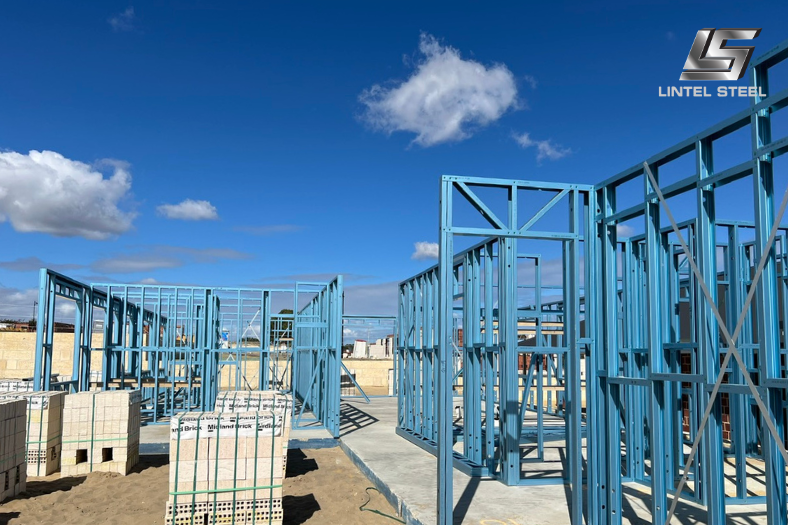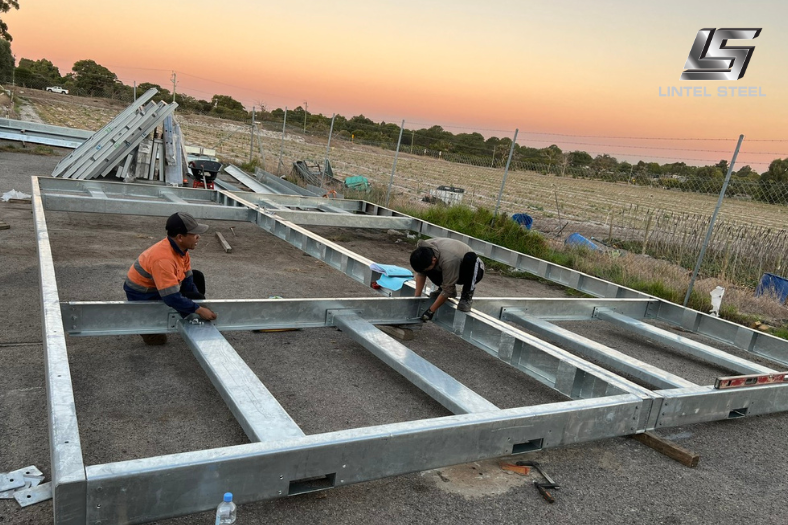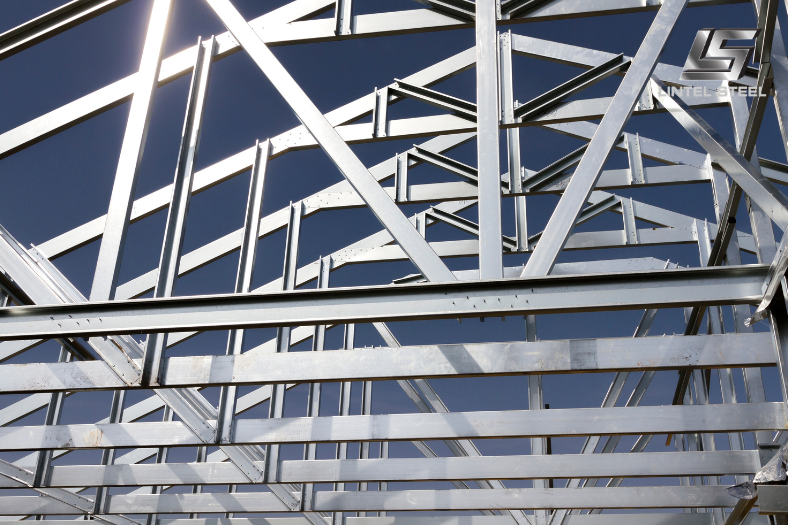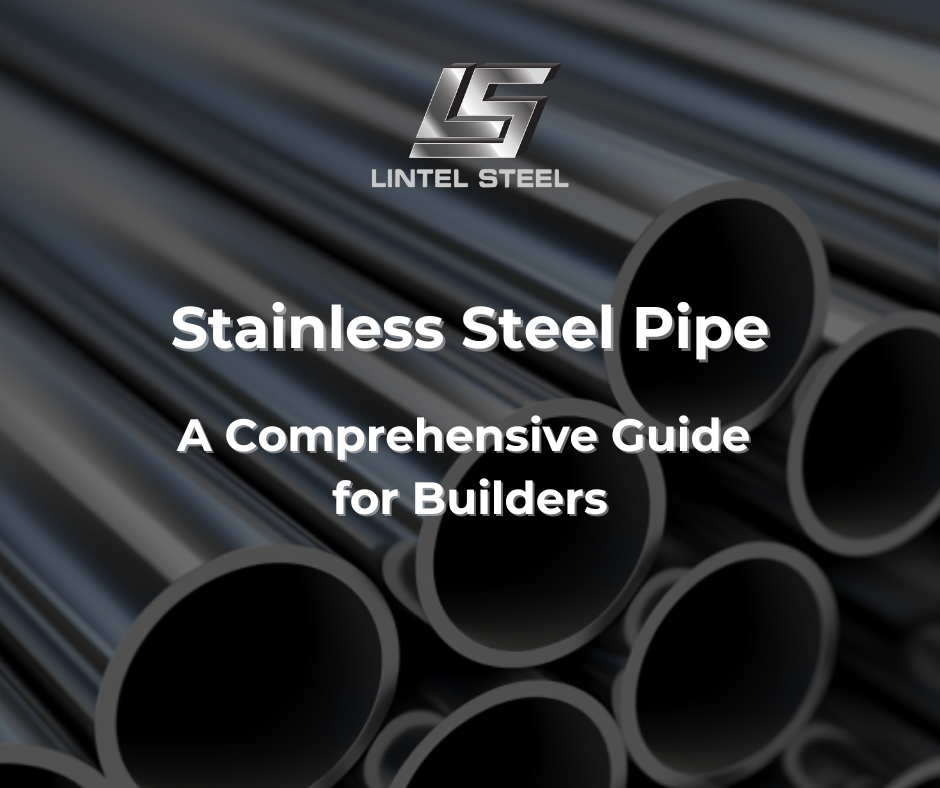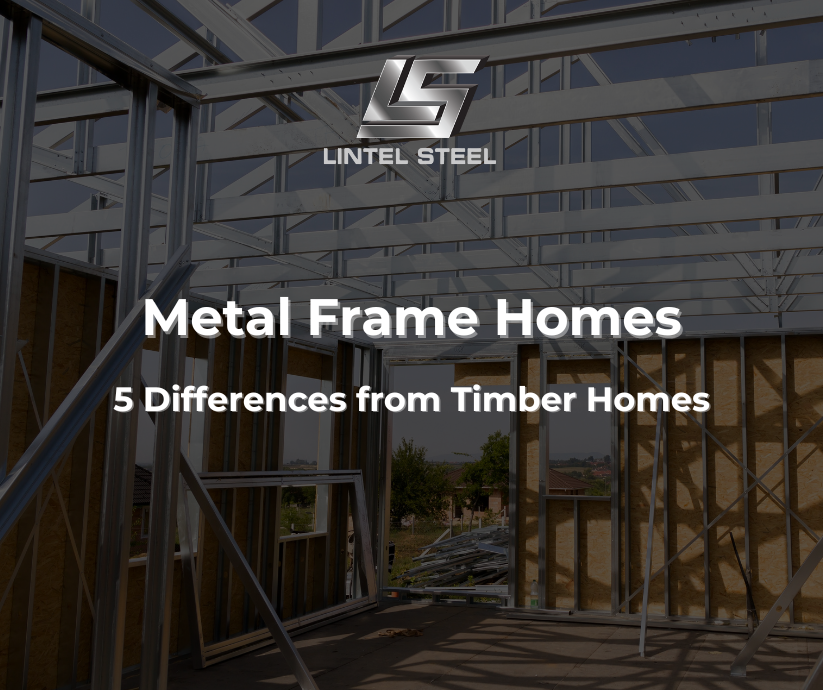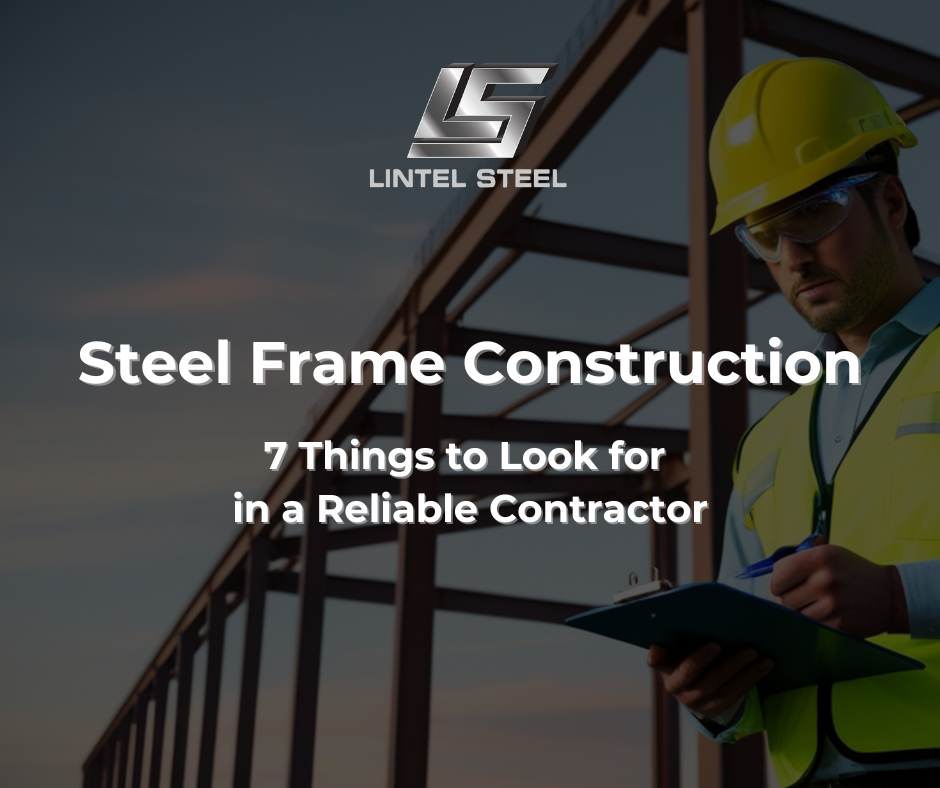Steel Structure Fabrication: 7 Steps of Fabrication Process
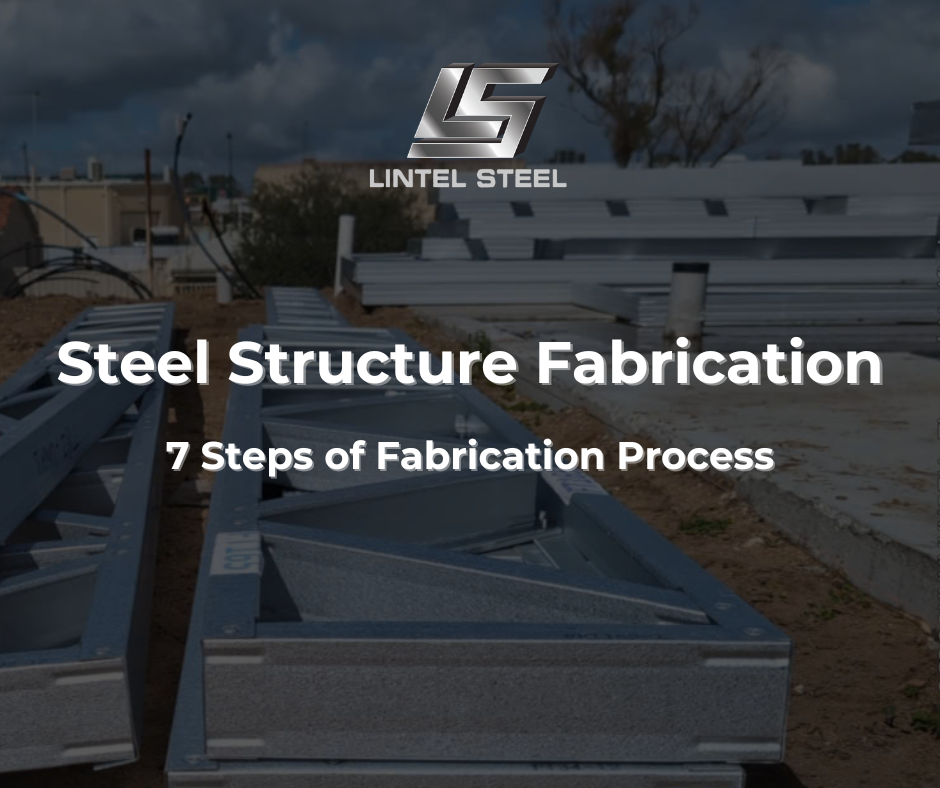
Steel structure fabrication plays a vital role in today’s construction and engineering industry. It’s the process of cutting, shaping, assembling, and welding steel to create strong, durable structures used in buildings, factories, warehouses, and bridges. Unlike traditional materials, fabricated steel offers higher precision, faster installation, and long-term reliability — making it one of the most preferred choices for modern construction projects.
In simple terms, steel structure fabrication turns raw steel sections like beams, columns, and plates into custom-designed structural frameworks that meet exact engineering specifications. Every step — from design and detailing to fabrication and erection — requires advanced machinery, skilled workmanship, and strict quality control to ensure safety and performance.
Thanks to these advantages, steel fabrication has become the backbone of industrial and commercial construction, delivering the perfect balance between strength, flexibility, and cost efficiency.
What Is Steel Structure Fabrication?
Steel structure fabrication is the process of cutting, bending, assembling, and welding steel components to create structural frameworks used in buildings, bridges, factories, and industrial facilities. This process transforms raw steel into custom-made parts that can withstand heavy loads, resist corrosion, and deliver long-term durability.
The fabrication process typically involves detailed design, material selection, precise cutting, surface treatment, and final assembly before the structure is delivered to the construction site. Every beam, column, and connection is engineered to exact specifications to ensure accuracy and performance once installed.
The Importance of Steel Structure Fabrication
Steel fabrication is the foundation of modern construction and industrial engineering. It enables the creation of strong, reliable, and versatile structures that meet complex architectural and engineering demands.
Key reasons why steel fabrication is essential include:
- Strength and Durability: Structural steel offers a high strength-to-weight ratio, ensuring safety and stability even in demanding environments.
- Design Flexibility: Steel can be fabricated into nearly any shape, allowing architects and engineers to create innovative, open, and modern designs.
- Precision and Efficiency: Fabrication uses advanced technologies such as CNC cutting, laser profiling, and 3D modeling, ensuring that every component fits perfectly on site.
- Sustainability: Steel is 100% recyclable and produces less waste during manufacturing, making it an environmentally friendly construction choice.
The Steel Structure Fabrication Process
The steel structure fabrication process combines engineering expertise with precision manufacturing. Here’s how it typically works:
- Design and Engineering
Engineers use CAD (Computer-Aided Design) and BIM (Building Information Modeling) software to create precise digital blueprints and ensure accurate load calculations. - Material Selection
Choosing the right steel grade (such as mild steel, carbon steel, or structural alloy steel) is essential for meeting project-specific strength, durability, and cost requirements. - Cutting and Shaping
Steel plates and sections are cut to size using advanced techniques like plasma cutting, laser cutting, or mechanical sawing to ensure precision. - Welding and Assembly
Skilled welders assemble and join the steel components following international standards to create a strong, unified structure. - Surface Treatment and Finishing
The steel is cleaned, galvanized, or powder-coated to protect against rust and corrosion, especially for outdoor and coastal applications. - Inspection and Quality Control
Each stage undergoes strict quality testing — including visual inspection, ultrasonic testing, and load analysis — to ensure the final product meets engineering and safety standards. - Delivery and Installation
Fabricated components are then transported to the construction site for erection, where precision connections allow for efficient and secure assembly.
Read more: Steel Frame Construction: 7 Things to Look for in a Reliable Contractor
Applications of Steel Structure Fabrication
Steel fabrication plays a vital role in many industries, such as:
- Commercial Buildings: Warehouses, factories, shopping centers, and office buildings.
- Infrastructure Projects: Bridges, towers, and transport terminals.
- Industrial Facilities: Oil and gas plants, mining structures, and power stations.
- Residential Construction: Prefabricated and modular steel frame homes.
Because of its versatility, steel structure fabrication supports both small-scale developments and massive industrial projects worldwide.
Benefits of Steel Structure Fabrication
Choosing steel fabrication for your project offers numerous advantages:
- High Strength and Durability – Ensures long-lasting performance even under extreme conditions.
- Faster Construction Time – Prefabricated components minimize on-site labor and delays.
- Cost Efficiency – Reduced waste, shorter project timelines, and recyclable materials lower overall costs.
- Design Freedom – Allows architects to achieve complex and aesthetic designs with precision.
- Low Maintenance – Protective coatings and corrosion-resistant finishes extend lifespan with minimal upkeep.
Choosing a Reliable Steel Structure Fabrication Company
Selecting the right steel structure fabrication company is one of the most important decisions in any construction or industrial project. A qualified and experienced fabricator not only ensures the structural integrity of your building but also helps you save time, minimize risks, and control project costs. Here are the key factors you should consider when finding the right partner:
1. Experience and Project Portfolio
A company’s experience is a strong indicator of its capability. Look for a fabricator with a proven track record across multiple sectors — such as commercial buildings, warehouses, industrial plants, and residential steel structures. Experienced teams understand how to handle complex designs, large-scale fabrication, and on-site assembly challenges. Reviewing their past projects gives you insight into their technical strength and reliability under real-world conditions.
2. Engineering and Design Capabilities
A top-tier steel fabrication company should offer in-house design and engineering support. This includes the ability to interpret architectural plans, perform load and stress analysis, and provide fabrication drawings using modern software such as AutoCAD, Tekla Structures, or Revit. An integrated design-to-fabrication process reduces miscommunication, improves precision, and ensures that all components meet structural and safety standards.
3. Compliance with Industry Standards and Certifications
Always confirm that the fabricator complies with recognized international and local standards, such as AS/NZS 1554, ISO 9001, and ASTM specifications. Certification ensures that the materials, welding procedures, and inspection processes meet strict quality benchmarks. A reliable company will also provide material test certificates (MTCs), weld maps, and QA documentation to guarantee full traceability from raw material to finished product.
4. Skilled Workforce and Advanced Equipment
The quality of fabrication largely depends on the expertise of the workforce and the technology used. Choose a company that invests in qualified welders, engineers, and machine operators trained in advanced techniques such as MIG/TIG welding, CNC cutting, plasma profiling, and robotic fabrication. Up-to-date machinery and automation systems help maintain accuracy, reduce lead times, and improve safety in production.
5. Quality Assurance and Inspection Process
A reliable steel fabricator follows a strict quality control (QC) process at every stage — from raw material inspection to final assembly. This includes non-destructive testing (NDT) like ultrasonic and radiographic testing to detect internal flaws, as well as visual and dimensional inspections to verify tolerances. The presence of a documented Quality Assurance (QA) program ensures that every piece leaving the workshop meets engineering and regulatory standards.
6. Health, Safety, and Environmental Commitment
Safety is non-negotiable in the fabrication and erection of steel structures. Make sure the company follows comprehensive Work Health and Safety (WHS) procedures and environmental management policies. Compliance with regulations such as ISO 45001 (Occupational Health & Safety) and ISO 14001 (Environmental Management) reflects the company’s commitment to safe operations and sustainable practices.
7. Supply Chain Management and Logistics
Efficient logistics and supply chain coordination are critical, especially for large or time-sensitive projects. Your chosen fabricator should manage raw material sourcing, production schedules, and transportation seamlessly to avoid project delays. A company with strong supplier relationships and its own delivery fleet can provide better reliability, especially when handling oversized or custom components.
8. Communication and Project Transparency
Good communication is key to a successful partnership. The best fabrication companies maintain clear and consistent communication with clients — providing progress updates, technical advice, and documentation at every milestone. Transparency in scheduling, pricing, and quality assurance builds trust and minimizes project uncertainty.
9. Cost Efficiency and Value for Money
While price is a factor, it should never come at the expense of quality. The right company offers competitive pricing with high value, ensuring you get durable materials, precise fabrication, and dependable project support. Low-cost providers may cut corners, resulting in costly rework or safety issues later on. Investing in quality fabrication pays off through longer service life and reduced maintenance costs.
10. After-Sales Support and Maintenance Services
The relationship with your steel fabricator shouldn’t end at delivery. A reputable company provides after-sales support, including inspection, maintenance advice, and modification services. This ongoing partnership helps ensure the continued performance and safety of your steel structure over time.
Working with an experienced and certified steel structure fabrication company ensures that your project is built to the highest standards of precision, safety, and efficiency. From accurate design to on-time delivery, the right partner can make all the difference in achieving a strong and lasting result — both structurally and financially.
Steel Structure Fabrication in Perth – Lintel Steel
At Lintel Steel, we have been a trusted steel structure fabricator in Perth for more than 11 years, delivering high-quality fabricated steel for residential, commercial, and industrial projects. Our team specializes in custom steel frames, structural beams, columns, and trusses, all manufactured to Australian Standards.
From design and fabrication to installation, we provide end-to-end steel solutions built for strength, accuracy, and reliability. We also offer free, no-obligation quotes within 48 hours to help you start your project confidently and efficiently.
Choose Lintel Steel – where precision meets performance in every structure we build.
Click here to get a quote and quantity takeoff for free.
You can find out more about us at our Fanpage Lintel Steel.

